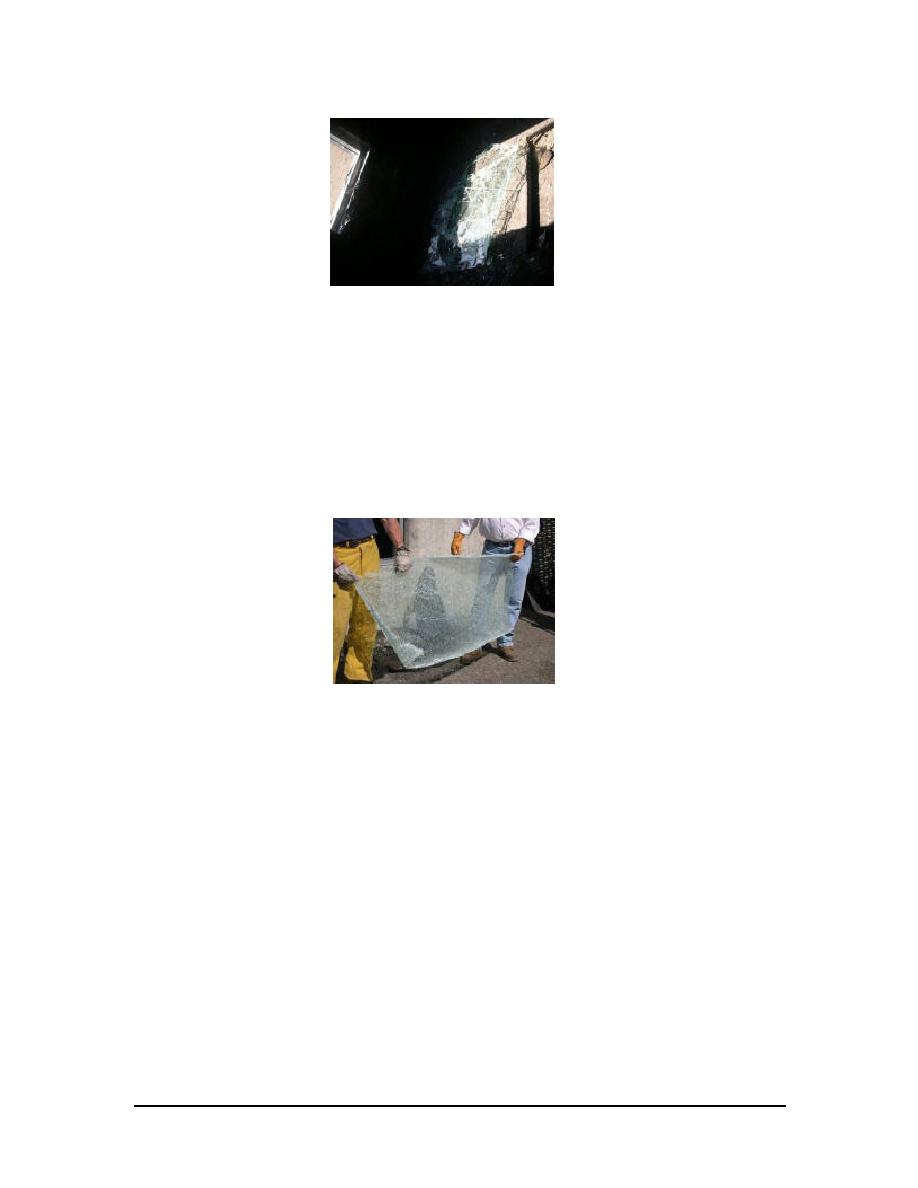
Forcible Entry Demonstrations
Page 10
Air-blast Resistant Window Systems
Figure 4: Test 1 Annealed
Glass with Daylight Film
7.2.2. Tempered Glass
Overall, it was easier to make entry through tempered glass with daylight film than
through annealed glass with daylight film. However, though entry was still rapid, the film
caused a delay over what would be expected (based on the past experience of the
participating firefighters) from an untreated tempered glass window. Additionally, no
shards remained in the frames after the breaks.
Figure 5: Test 3
Tempered Glass with
Daylight Film
7.3.
Mechanically Attached Film Application
Two methods of film attachment were tested, two-sided and four-sided. Clearing the
attached film required the firefighters to chop the film away from the framing at all
attached sides. The time statistics in Table 3 show the effects of the attachment on time to
clear.
The best technique employed over the course of the testing was to clear the top, clear
halfway down the two sides, then the bottom, followed by the remainder of the sides.
The presence of a center seam made no appreciable difference in the ease or speed of
forcible entry for the four-sided attached film, but it made a significant difference in the
two-sided attached film (vent for no seam was 15 seconds and vent with a seam was two
seconds). However, a seam located parallel to the attachment sides for a two-sided
attached application has not been tested for air-blast resistance.
Hinman Consulting Engineers, Inc
www.hce.com



 Previous Page
Previous Page
